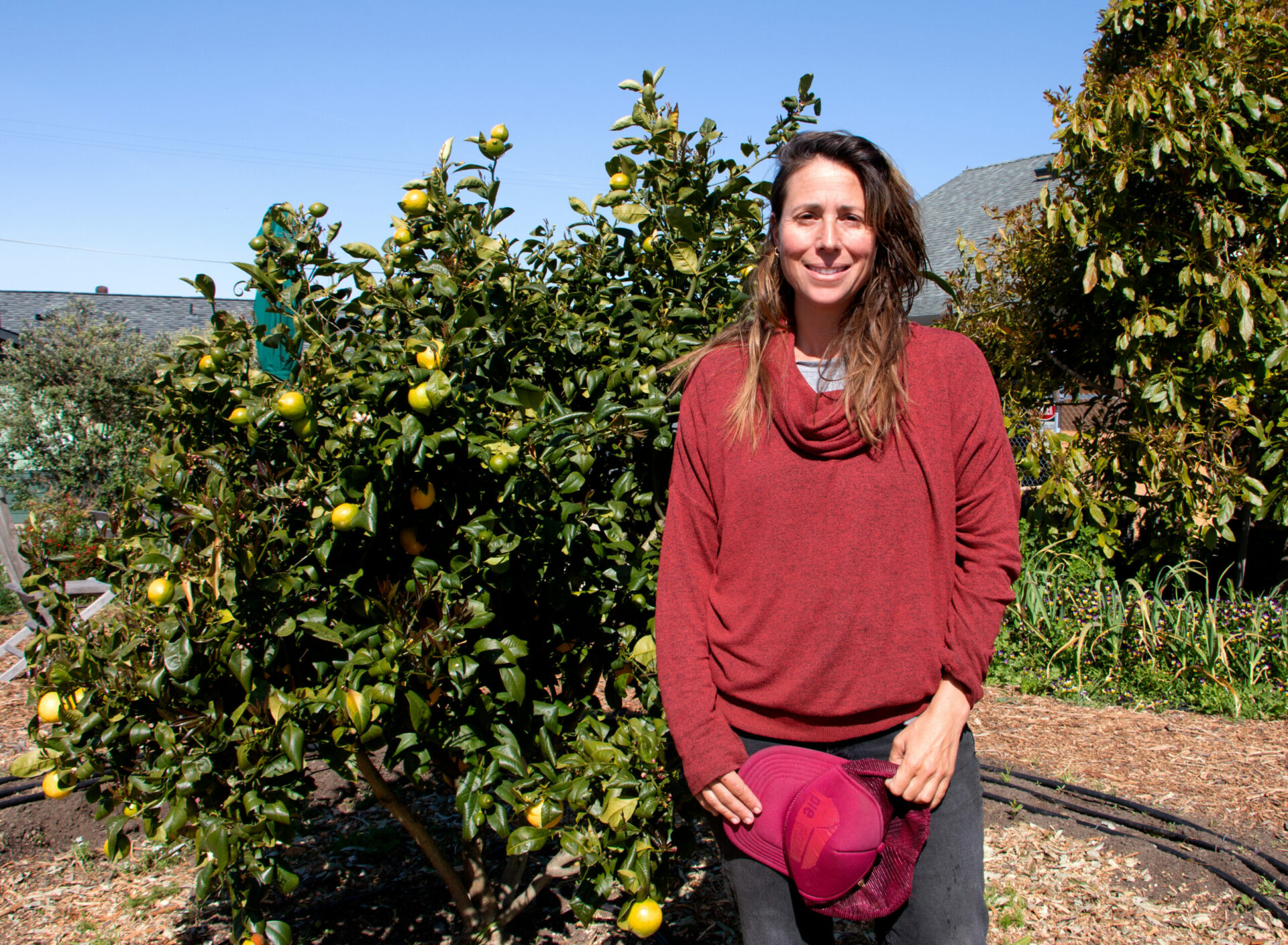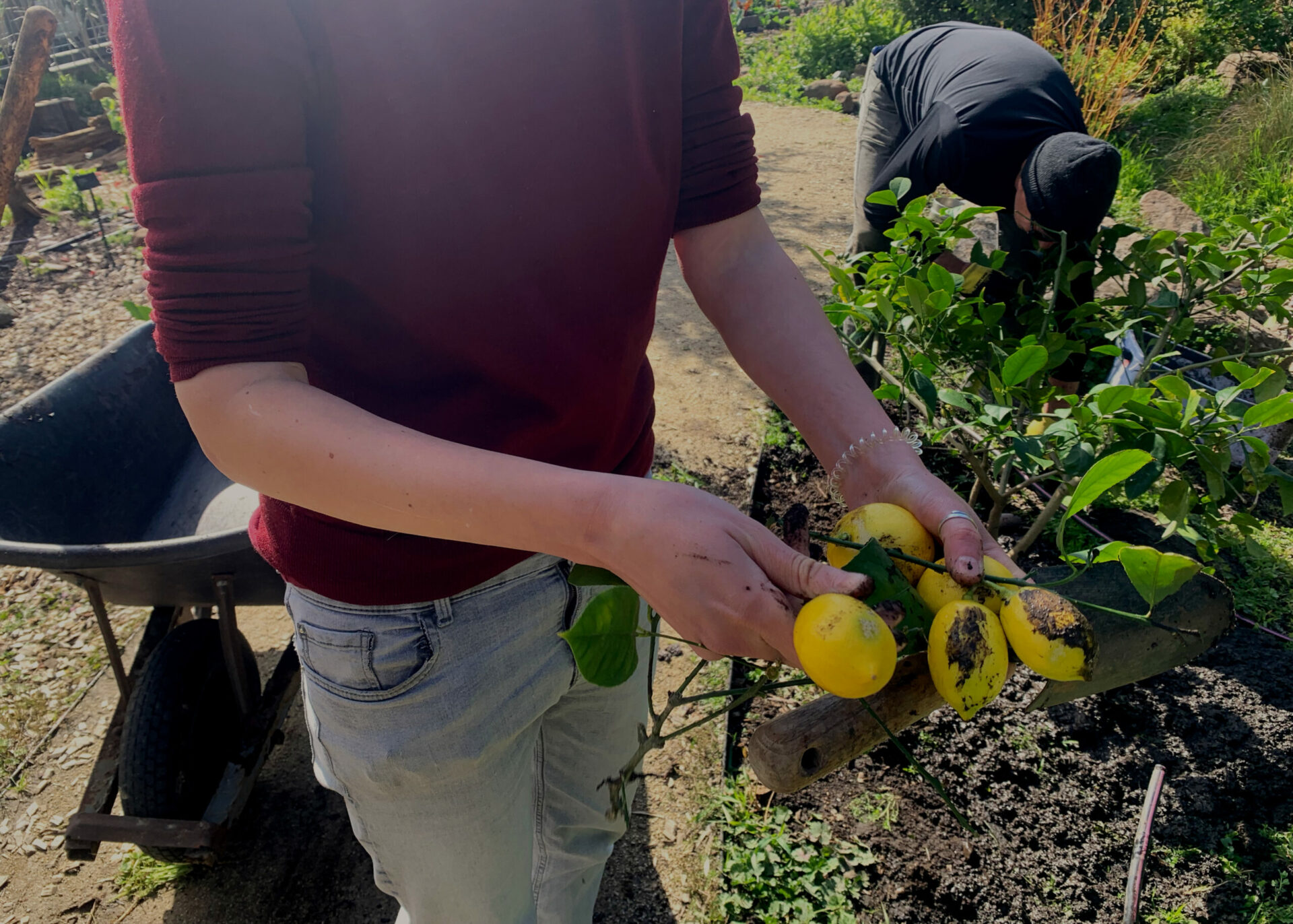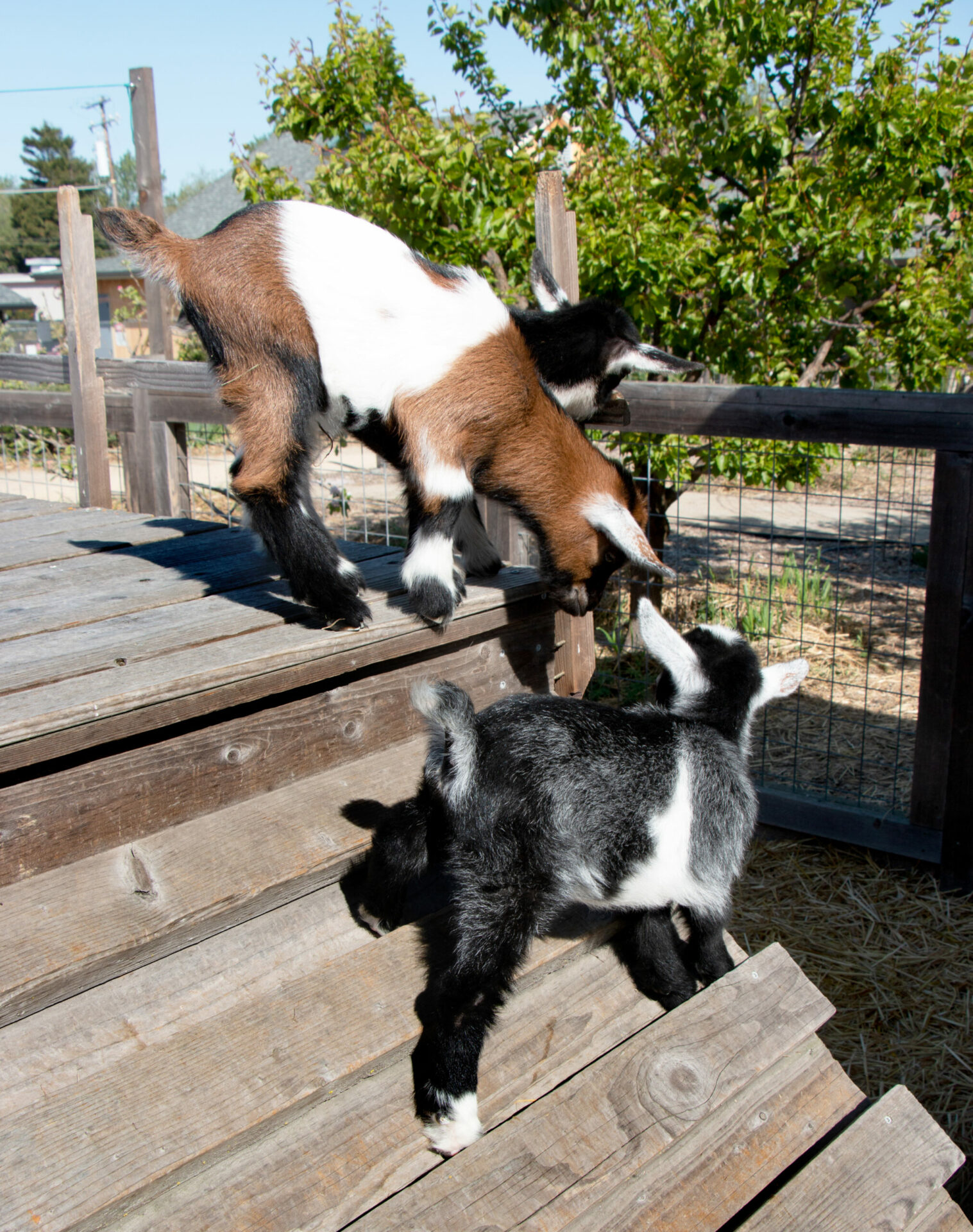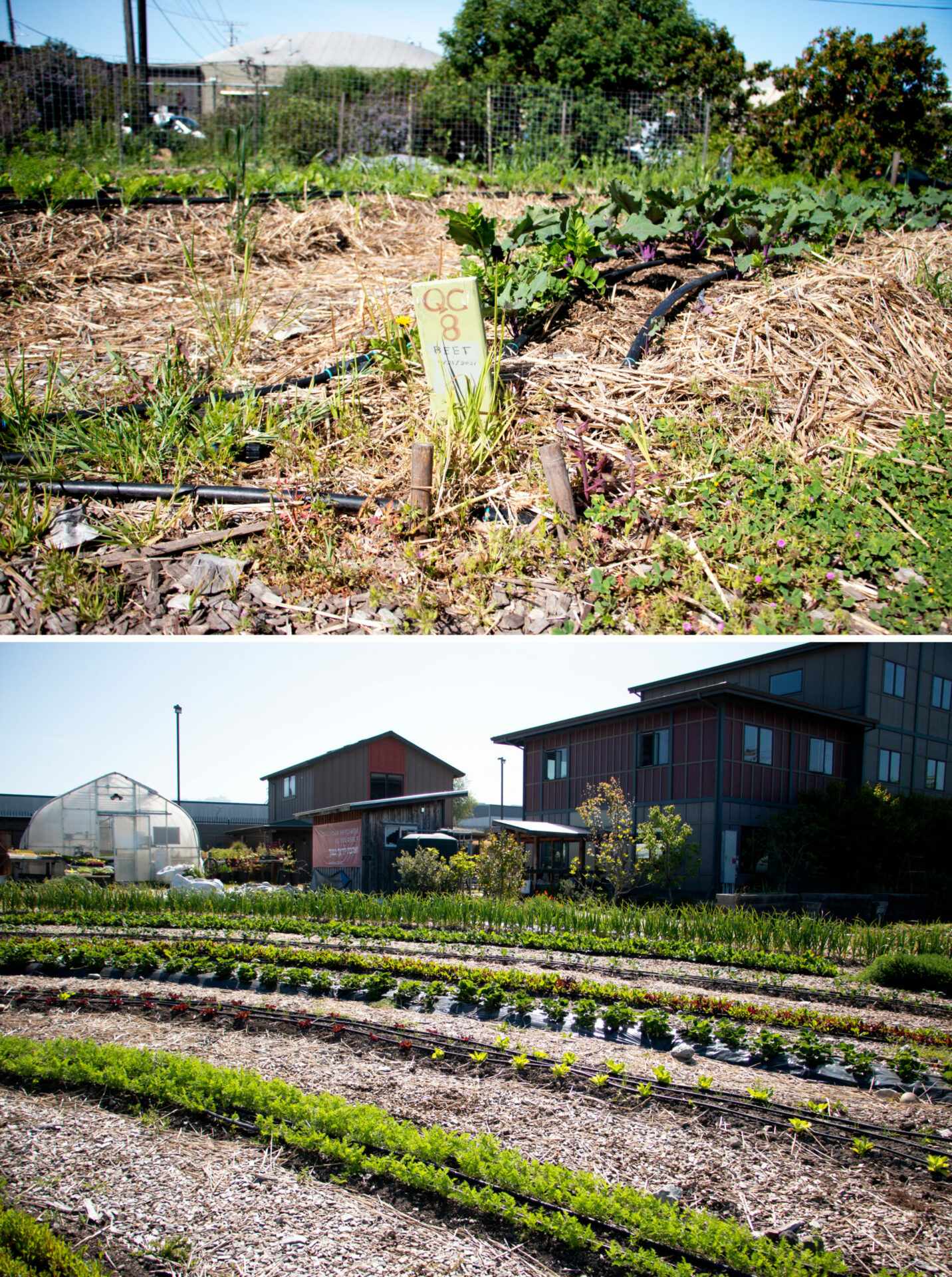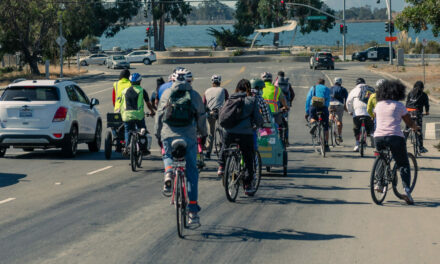Debbie Harris steps out of the offices of Urban Adamah, the Jewish urban farm she directs in Northwest Berkeley, and into the sun—a rare clear day between weeks of rain. The air smells of wet dirt and delicate jasmine flowers climbing a nearby trellis. Every so often, the wind carries a whiff of mashing grains from the brewery across the street.
It’s Tuesday, volunteer day, with a dozen volunteers scattered across the farm’s two acres. Harris is part of a three-person farm team; she normally has help managing the volunteers, but another farmer called out of work, so today she’s on her own. She is dressed for her many jobs, layered in a turtleneck and sweater beneath a heavy-duty work jacket, frayed black jeans grazing well-worn boots. She keeps her butterscotch-brown hair tucked up in a half-twist, some stray pieces falling around her face after a morning of troubleshooting the farm.
Harris is a farmer by trade—at 40, she’s worked on both rural and urban farms since her early 20s—but her role at Urban Adamah requires her to be “a horticulturalist, a plumber, a therapist, a teacher, an organizer.”
Nurturing a lemon tree. Photo: Kate Raphael.
When we met a week earlier, she’d been up since 4 a.m., tending to her one-year-old. Now, she materializes next to three volunteers uprooting a Meyer lemon tree that wasn’t getting enough sun. They thrust their shovels beneath the shrubby tree’s root ball, lifting it from the earth, while Harris advises them on cleanup: “You can throw the leaves on the compost pile,” she says, gesturing to the other side of the farm.
She strides toward the center bed, where volunteers replaced the cardboard protecting the strawberries from rain with straw. “We are tucking them in,” one volunteer says, laying straw over the scalloped green leaves and joking that the straw mulch must be the fruit’s namesake. “That’s right,” Harris says with a smile. “That’s why they’re called strawberries.”
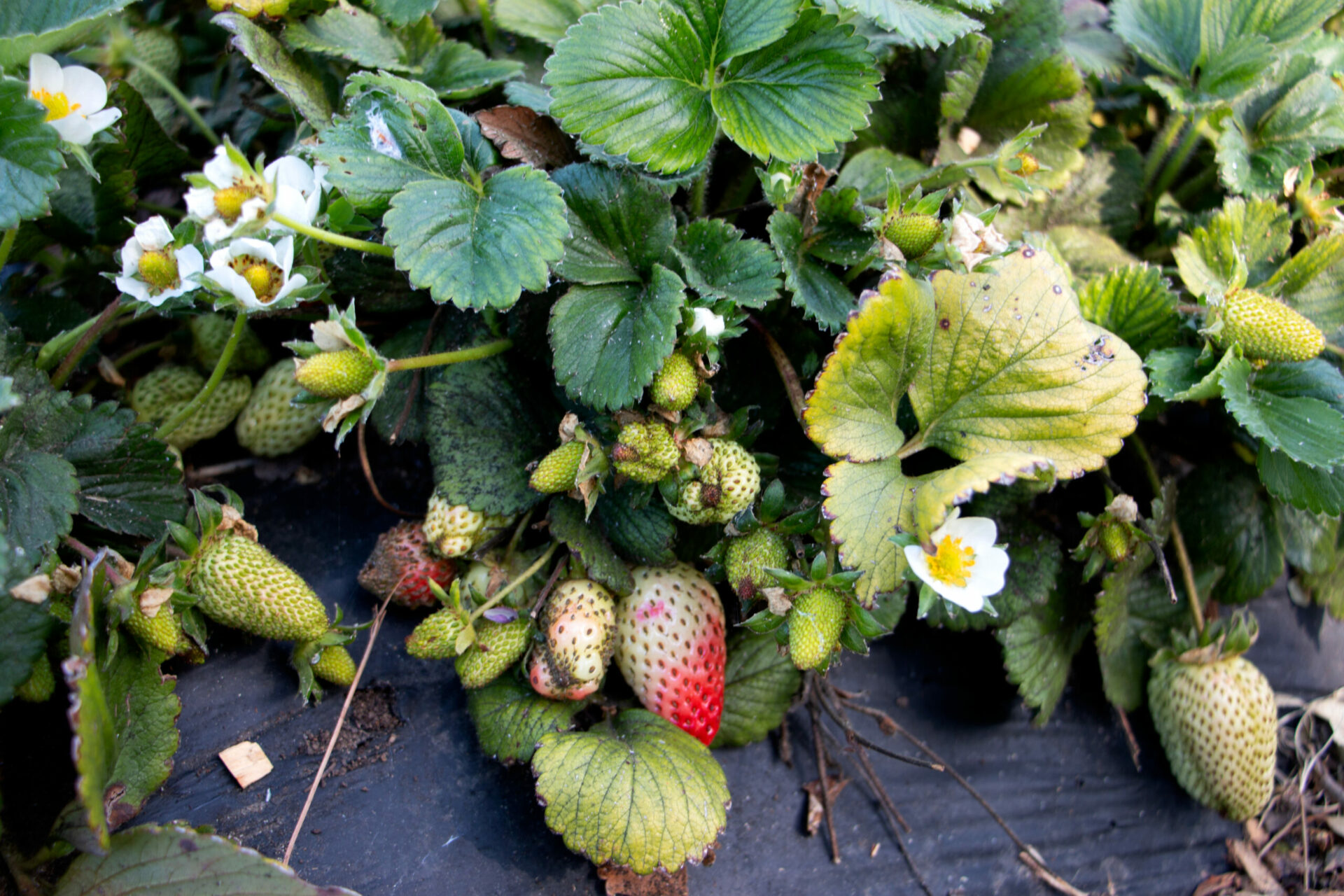
The strawberry crop ripens. Photo: Kate Raphael.
Harris makes farming look easy, though of course it’s never been easy. She first began farming on an organic zucchini farm in Weaverville, North Carolina. In 100-degree heat, she hunched over and harvested zucchinis bigger than her forearm, hurling them into an adjacent field.
“It was a brutal environment,” she says. And yet, “actually seeing how food grew and being part of the process is what clicked.”
At 23, Harris began managing one of Philadelphia’s 400 urban farms. Before she stepped in, the farm was on a hot streak, winning first prize in the city garden contest for years.
“The year that I took it over, it tanked,” Harris says. “I don’t even know if we made it on the map.”
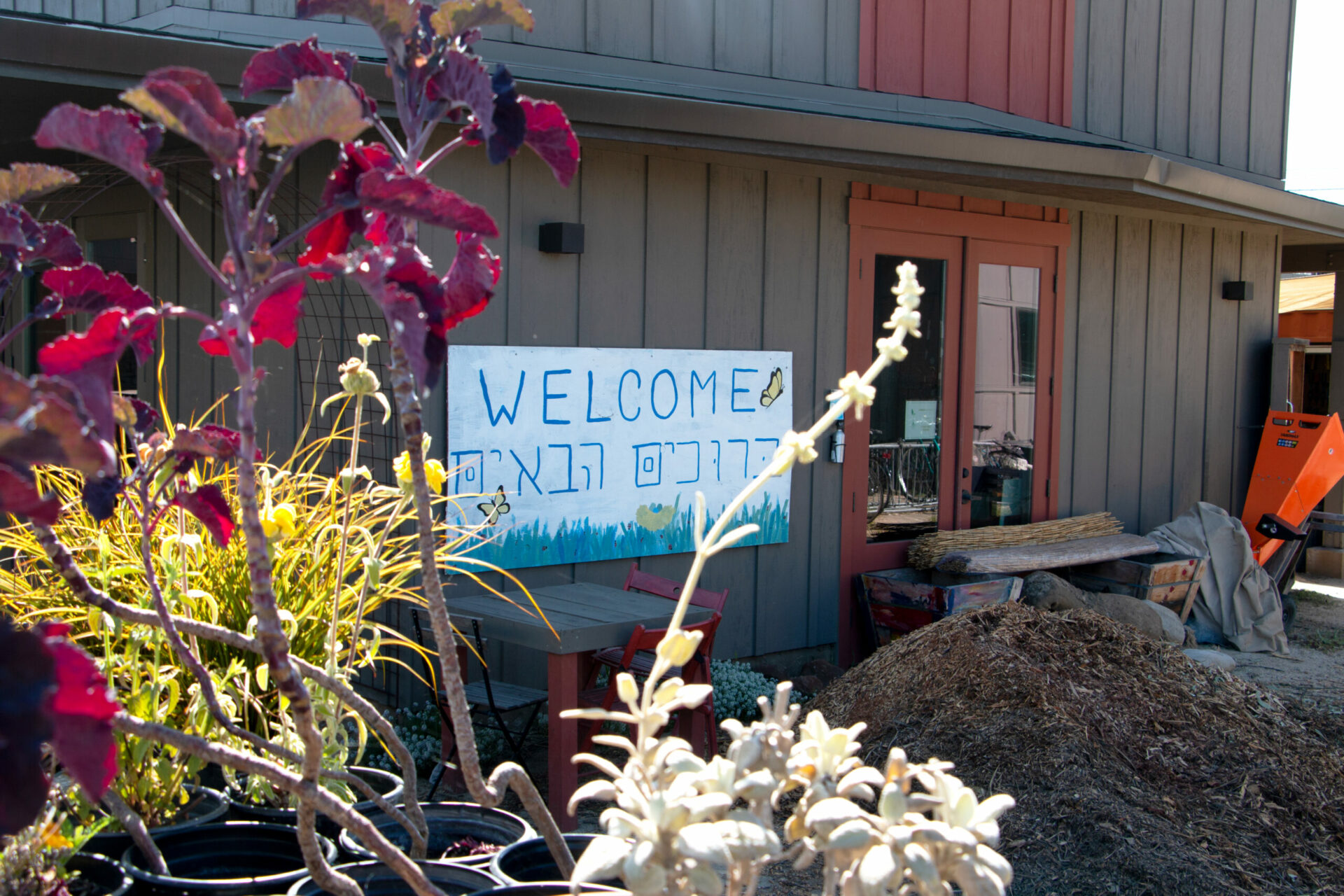
Friendly signage at Urban Adamah. Photo: Kate Raphael.
Out of her depth, Harris dumped pure fish fertilizer on a mint patch, which destroyed the plant’s immune system, leaving it susceptible to pest infestation. She sent aphid-covered mint to a horrified chocolate manufacturer. She accidentally weeded out the spinach she’d planted because she didn’t know what it looked like. Harris didn’t even know how deep to water her crops.
“I’m completely making this up,” Harris thought at the time. “I should probably stop and figure out how to do this.” So that’s what she did.
Harris took unpaid leave and traveled to Nicaragua to study permaculture, an approach to farming that sustainably integrates the landscape with the people who produce and consume food from it. She returned to Philadelphia, installed an irrigation system, and “read every book under the sun.” The following year, her farm reclaimed first place in the city flower contest.
Now Harris knows what she’s doing. Since 2019, she has overseen all the farming at Urban Adamah, which produces 800 to 1,000 pounds of food a week during the peak growing season. Harris and her team grow a rainbow of produce. Basil, berries, beets, beans, and broccoli. Rosemary, radishes, and arugula. Eggs from chickens, honey from bees, milk from their goats, Frankie and Dottie.
Urban Adamah sends 90% of what it grows to the Berkeley Food Pantry and Berkeley Food Network, which distribute the harvest to a food-insecure population.
“Adamah” translates to “soil” or “earth” in Hebrew, and Urban Adamah is rooted in regenerative agriculture and the balance between landscape and people. Harris pointed to two big tracts of land she is converting to “no-till” growing zones. Soil is a natural carbon sink, but disturbing the soil by tilling it, as in traditional farming, releases carbon back into the atmosphere.
Four-footed farmworkers. Photo: Kate Raphael.
No-till farming leaves the beds undisturbed, sequestering carbon and maintaining the soil’s microecology. To ready the no-till growing beds, Harris and her team layer cardboard, straw, compost, and manure muckings from their goats and chickens.
During the winter, Harris plants cover crops—oats, rye, bell beans, and peas—which are not harvested as food, but rather used to prevent erosion, suffocate weeds, control moisture, and add nutrients to the soil. Come spring, these crops get reincorporated into the compost pile that nourishes the next harvest.
Harris is “trying to keep the loop as close as possible,” she says. “Not closed but close.”
The farm has both tilled (bottom) and untilled (top) acreage. Photo: Kate Raphael.
These efforts to increase climate resiliency are critical in the Bay Area. Harris and her team prepare for winters of incessant, torrential rain sandwiched between periods of extreme dryness. Still, a landscape is always changing, and a good farmer responds to her landscape.
A train whistles nearby, the tracks running three blocks west of where we stand. Harris turns to the volunteers tasked with the lemon trees, asking, “Hey Robert, have you already planted the other lemon?” Robert nods. “It had a root ball, not great,” he says. “Just needs to be kept watered.”
The train rumbles past, its whistle growing louder. Before it’s gone, Harris is. Already on to the next task—perhaps a bit abruptly for the reporter waiting to ask another question—is how she rolls.






